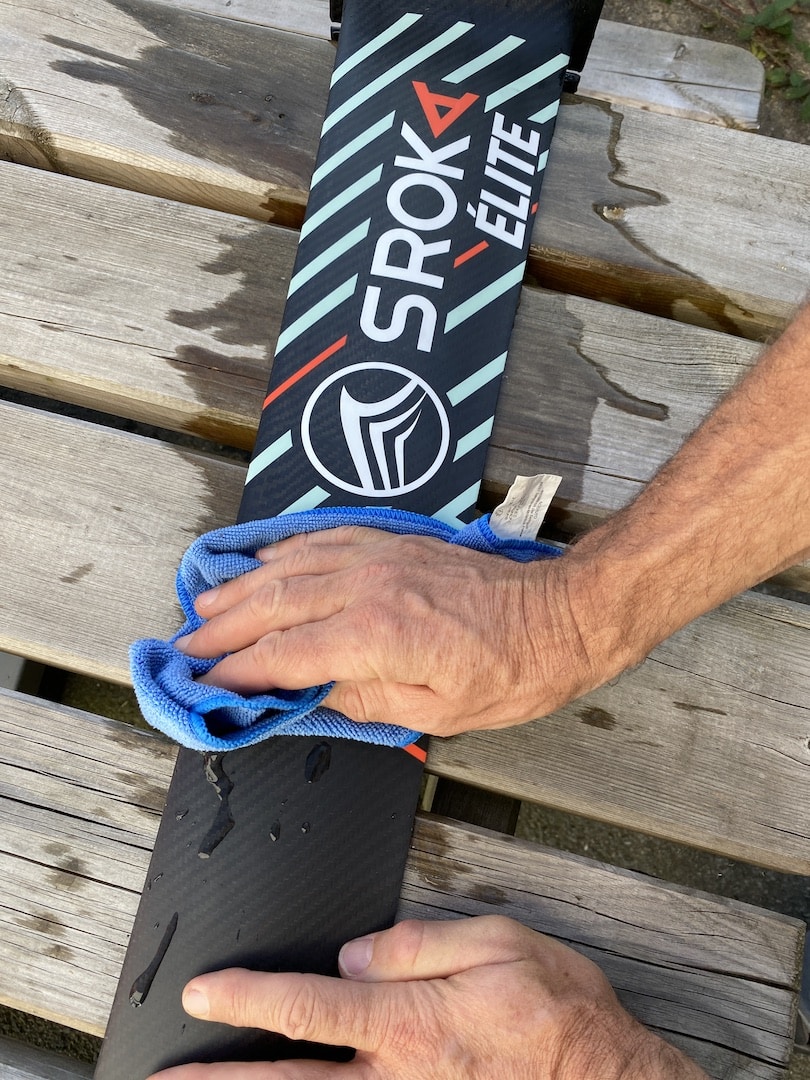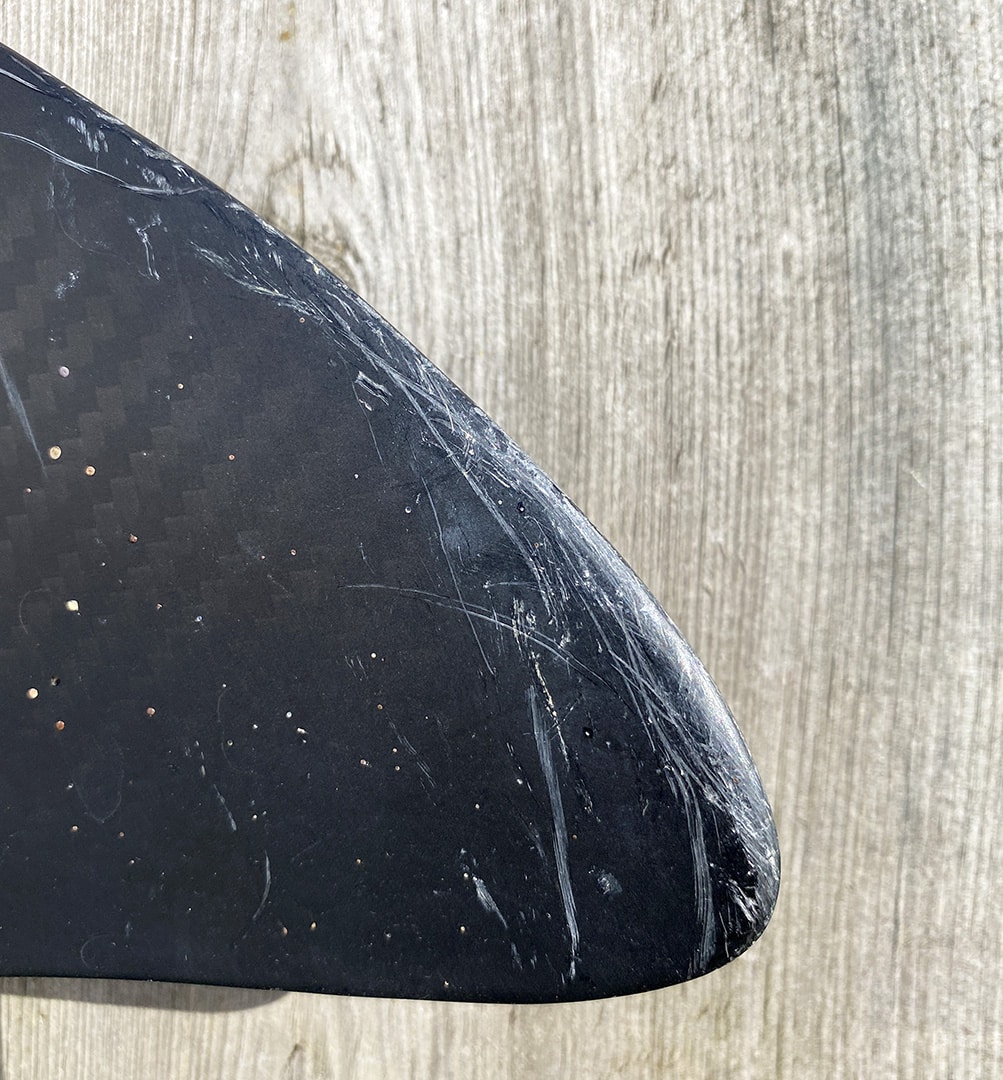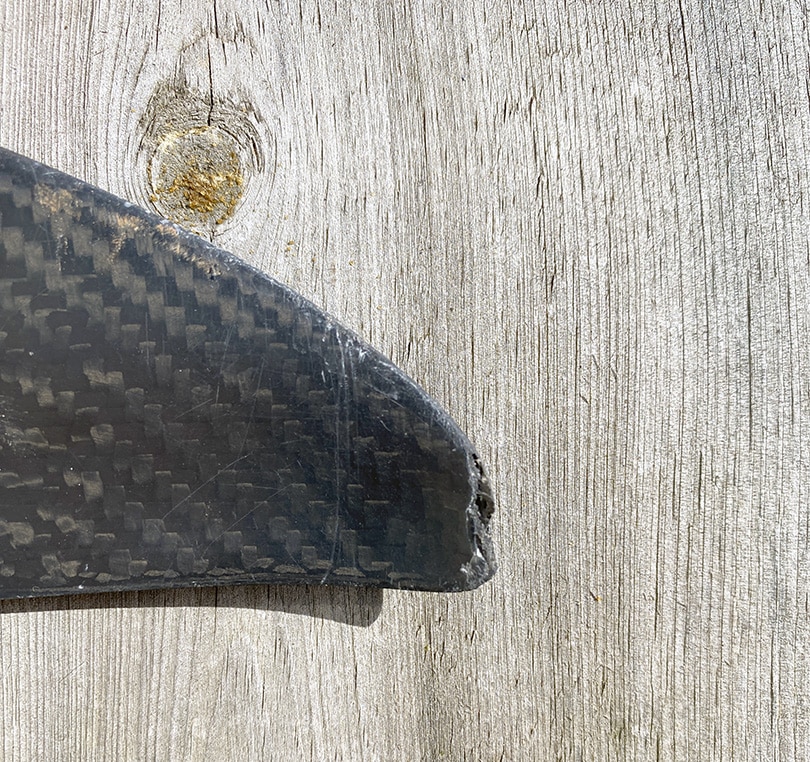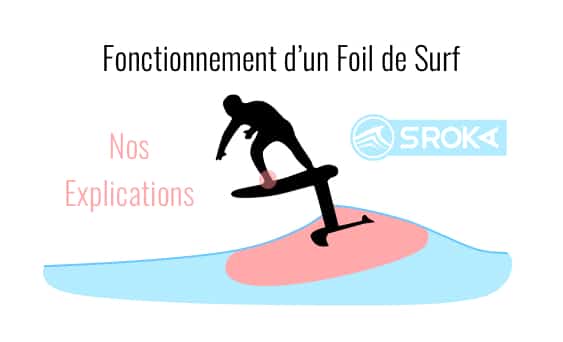 LE MAGAZINE
LE MAGAZINEHow to maintain your foil carbon?

How to maintain your foil carbon?
Our foil carbon is a jewel of technology. Many people say thata foil carbon requires no maintenance. However, to optimize its longevity and long-term performance, a minimum of maintenance is essential. Checking and maintaining your foil carbon will optimize its performance over the long term. In this article, we will list all the tasks you need to perform to maintain your foil carbon.
A foil carbon requires minimal maintenance!
Check that your foil is properly aimed before sailing.
Before each session, check that your screws are properly tightened. If you have sand in the thread, clean it out before screwing to avoid damaging the thread.

A foil is an underwater aircraft.
A foil is like an underwater plane. Any encounter with an underwater obstacle will weaken your foil to a greater or lesser extent. You have to think like an airplane. If a plane hits a cliff, there’s bound to be damage. A foil is not built to hit an obstacle. Keep this in mind to keep your foil running smoothly. Especially if one end of the front wing touches an obstacle. The leverage on the mast will be very important, and even more so if there’s a large wingspan and the speed is high.
Tips: Stop far enough away from the board to avoid touching it. Especially if you have a very light foil carbon ( 1.5-1.7 kg for the mat). This means it’s foamed and therefore contains less carbon. It is therefore more fragile. Stay away from buoys, whose chain can get tangled up with your foil and damage it.

Rinsing and drying
Whether you sail in fresh or salt water, from time to time, rinse your foil. It probably contains hydrocarbon or other residues. Rinsing your foil correctly will prevent these deposits from impairing the glide of your foil. The same applies to sunscreen. If you have put cream on your face, avoid touching your foil. It’s a greasy substance that will impair the efficiency of water flow on the mast profile or fins.
Tips: After rinsing with clear water, wipe your foil with a soft cloth, allowing you to check all the seams. You’ll see that everything’s in good condition. It will also prevent the cover from becoming mildewed.

Stripes
Any scratch on a front or rear fin slows down your foil. The flow of water is disrupted, affecting your speed and/or stability to a greater or lesser extent. Of course, if you’re sailing at 15 knots, you won’t feel any difference. The higher your speed, the more you’ll feel these scratches.
Tips: Avoid resting your board on the rail while leaning on the front fin. Stop a little further from the beach to avoid scratching your fins.

Damage to the front or rear fenders
There are two ways to get shocks on the fins of foil.
- The first case is when handling your equipment on land. You drop your foils on the ground, or you don’t position the foil with the board in line with the weather, and in strong winds, the foil pushes the foil and causes it to fall onto the fin tip.
- The second, you’re sailing and you haven’t paid attention to the depth. You’ve hit an obstacle, a rock or something.
Tips: Fin snags happen all the time through carelessness, so when you return to the shore, stop further out and swim a little to leave or return to the shore.
- Always place your foil on the beach in line with the wind to avoid a gust pushing the mast to one side and tipping the foil to one side.
- Replace the protective covers when your foil is on the spot. This will prevent damage to your wings in the event of contact with the ground. Similarly, when you dismantle your mast from the board, put the mast cover on to avoid damaging it.
- 20% of drag comes from the tips. So pay attention to your front and rear wing tips.
How to avoid heat damage?
The sun can be an enemy of your foil. The carbon mast is generally black, which means it absorbs a lot of heat in a very short time, whether in direct sunlight or in your car. Epoxy resin polymerizes at temperatures around 70°C. If your mast is left in direct sunlight, it’s very easy to reach these temperatures, and the resin is likely to soften, losing its effectiveness. The same applies if you leave your foil in the car: it will overheat and the epoxy resin will no longer work properly.
If this is the case, we recommend that you allow your foil to cool down before sailing, so that the resin can cool and the mast can regain its properties. If you don’t, you run the risk of damaging your mast, particularly with lightweight masts which are foamed and therefore have less mechanical strength. If the resin loses its effect, the mast will become even softer and progressively more brittle.
In conclusion
You have invested or are about to invest in an expensive carbon foil. This investment will pay off in the long term if, and only if, you take good care of it. If you do, it will serve you well for many years. If you’ve bought a rigid, durable and well-built mast, then taking good care of it will save you money and help you keep it for longer. A Ferrari takes care of itself, so does a high-modulus carbon mast.
 Le Magazine
Le Magazine














